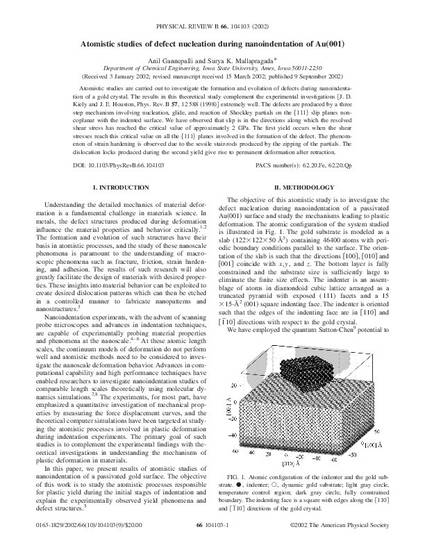
Atomistic studies are carried out to investigate the formation and evolution of defects during nanoindentation of a gold crystal. The results in this theoretical study complement the experimental investigations [J. D. Kiely and J. E. Houston, Phys. Rev. B 57, 12 588 (1998)] extremely well. The defects are produced by a three step mechanism involving nucleation, glide, and reaction of Shockley partials on the {111} slip planes non-coplanar with the indented surface. We have observed that slip is in the directions along which the resolved shear stress has reached the critical value of approximately 2 GPa. The first yield occurs when the shear stresses reach this critical value on all the {111} planes involved in the formation of the defect. The phenomenon of strain hardening is observed due to the sessile stair-rods produced by the zipping of the partials. The dislocation locks produced during the second yield give rise to permanent deformation after retraction.
Available at: http://works.bepress.com/mallapragada_surya_k/7/

This article is from Physical Review B - Condensed Matter and Materials Physics 66 (2002): 104103, doi: 10.1103/PhysRevB.66.104103. Posted with permission.